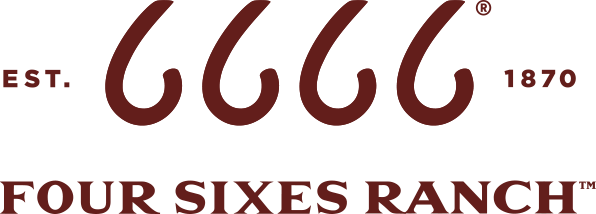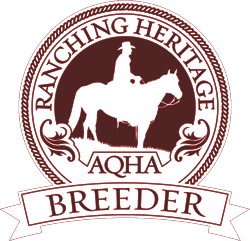For now, producers have the opportunity to help direct development of the nation’s cattle traceability program.
Beef Magazine
February 22, 2019
by Wes Ishmael
“My belief is that it’s coming, and we can accept that it’s coming and develop a plan we can live with, or we can accept what’s given to us,” says Joe Leathers, general manager of the storied 6666 Ranch (Four Sixes) at Guthrie, Texas. “Producers need to understand that USDA is really wanting producers to come up with the plan; and that, in my opinion, is a major difference from several years ago.”
Leathers is talking about a broader, more effective standardized national cattle traceability program that enhances the current Animal Disease Traceability (ADT) program.
For perspective, unless otherwise exempted, ADT requires livestock moved interstate to be officially identified and accompanied by an interstate certificate of veterinary inspection or other documentation.
For beef cattle, the rule only applies to those 18 months of age or older. So, feeder and fed cattle remain exempt.
As such, ADT falls short of the ability to trace cattle back to current and previous locations of residence within 48 hours — for the purposes of animal disease tracking and management — which was originally envisioned and needed in the event of discovering a virulent foreign animal disease (FAD) like foot-and-mouth.
To put Leathers’ comments into perspective, you need to hear what he told the audience at the 2017 Livestock Traceability Symposium (LTS) relative to the lack of widespread producer participation in traceability discussions. The LTS was co-hosted by the National Institute for Animal Agriculture (NIAA) and United States Animal Health Association.
“The reason you don’t see stakeholders [producers] involved is because of fear,” Leathers said. “Lack of trust causes fear. Change causes uncertainty and fear. To be quite honest, the things in the industry we’ve received from the federal government will make you want to stand up and fight; and that’s what ranchers do …
“When I became a commissioner for the Texas Animal Health Commission [TAHC], as a producer, I didn’t really look at the animal health commission and state vets as my friends or partners — just as I didn’t look at federal vets as partners or friends. I learned very quickly that the state commission and federal vets are there to protect the industry that I make my living from every day.”
Producer involvement critical
But, producer involvement and direction is necessary for an effective program, Leathers believes.
At the LTS, the crowd included some producers, but lots more state and federal veterinarians and regulators, association representatives and the like.
“I personally do not believe that you will ever put together an animal disease traceability program on your own that will be accepted by the industry and that will work smooth unless the stakeholders [producers] are the ones who put it together,” Leathers told the group.
He also asked the producers who were in attendance if they bought crop insurance or hedged cattle. Most did.
“With traceability, all you’re doing is buying an insurance policy,” Leathers explained.
“The reality is, we live in a world today when a terrorist attack could happen at any moment. If there was the introduction of anthrax, TB, or foot-and-mouth, what would it do to the cattle industry? It would destroy it. If we had the ability to quarantine and trace the cattle, we could not only minimize but maybe shut down the problem. We’re talking about animal and human well-being.”
TAHC, Texas fever tick program
South Texas is ground zero in the war against fever tick incursion from Mexico. Without robust animal traceability, however, the battle is more expensive and more intrusive for ranchers in the fever tick control zone.
“If we’d have had a traceability program, the state of Texas wouldn’t have had to come up with another $7 million for the budget at our commission — or at least not all of it. There would have been producers that would have never been quarantined if we could have traced the infected cattle,” Leathers said.
So, Leathers understands the need for traceability. As a producer, he also understands the real-world complexity of developing a program that will work for unique cattle operations of all sizes, coast to coast and border to border. Never mind the need for speed when it comes to identifying and tracking FADs like those Leathers mentions.
EID is practical approach
The Texas drought in 2010-11 cemented Leathers’ belief that electronic identification (EID) is the method necessary for an effective cattle traceability system nationwide.
When the most recent devastating drought deepened, the Four Sixes, like others in the drought’s grip, had to make some tough decisions — figure out how to hold on or head for the out gate.
“We wanted to hold our genetics together that we’d worked on for over 100 years,” Leathers explains. “We had second and third-generation people working for the ranch — and if we sold the cows, what do you do with those folks who had given their lives to the ranch?”
Ranch owner Anne Marion, great-granddaughter of ranch founder Capt. Samuel “Burk” Burnett, decided to keep going. That meant hunting for ground outside of Texas. That was a significant decision, because the Four Sixes had never run cows outside of the state since it started in 1870 — except for a brief period decades earlier, when cattle were trailed north to Indian territory to find forage amid another drought.
The Four Sixes leased nine ranches in five other states and moved about 5,000 of its cows over the course of almost three years.
“Trying to read brite tags for health papers took us four days in 100-degree [F] heat. It was a lot of stress on both cows and men. That’s when we decided to use EID,” Leathers says.
The brite tags he refers to were the metal clip tags denoting calf-hood vaccination for bovine brucellosis. USDA also issues brite tags free of charge for use as official identification in the mandatory ADT program.
As for cost, the Four Sixes continues to move lots of cattle when leases expire. Leathers says the first movement of cattle with EID paid for all of the setup costs via reduced stress on the cattle, along with reduced labor and overhead.
Beyond movement, among other things, Leathers uses individual IDs to depreciate cows. He can see how many coming 11-year-old and 12-year-old cows he needs to cull, and how many heifers he needs to keep to replace them.
He can also associate calf feedlot performance — the Four Sixes feeds out all of its calves — with cows and ranches. Ultimately, that helps identify specific performance of the bulls he needs to buy and place at each ranch.
What about traceability?
Back to disease traceability.
Without EID, Leathers explains a quarantine on the Four Sixes herd at Guthrie, Texas, would mean gathering cows on 160,000 acres. That would take three weeks; brush means some still wouldn’t be found.
With EID, though, Leathers can tell officials where each cow resides.
“I can tell you whether those cows were bought or ranch-raised. I can tell you if they’re black, black baldy or red,” Leathers says. “In a matter of minutes, I can tell you if that one particular cow is in Nevada, Montana or Wyoming — and which ranch in those states. If I bought that cow, I can tell you where she was bought.
“I can tell you when that cow was pregged, and the vaccination program on that cow. If she was open and we shipped her, if it was recorded, I can tell you where we sent her, whether she went to the packinghouse or went to the sale. The amount of data that I can enter for an EID tag, as a commercial operator or a registered operator or a stocker operator — it’s unlimited.”
Traceability prototype
Part of the complexity of developing an enhanced ADT program comes with all of the proverbial cooks who favor different recipes.
That’s before considering the needs and concerns of the different industry segments involved: beef cattle producers, dairy cattle producers, stocker operators, sale barns, feedlots, packers, state and federal veterinarians, and animal health regulators.
This complexity and decades of kicking the same rocks without solutions is one reason why Leathers was a proponent of developing what became known as the Cattle Traceability Working Group (CTWG) 18 months ago.
If you’re unfamiliar with it, the CTWG is comprised of 39 volunteers representing 28 different organizations — producers and thought leaders who have been involved in the industry’s traceability discussion for years. You can see a list of members in the CTWG section at National Institute of Animal Agriculture (NIAA), animalagriculture.org.
CTWG is small enough and industry-broad enough to hash out a potential traceability prototype.
“The purpose of the Cattle Traceability Working Group is to work collaboratively across the various segments of the cattle industry to enhance the traceability of animals for the purposes of protecting animal health and market access,” according the CTWG.
“The CTWG will strive to create consensus among all stakeholders on key components of the system so there is an equitable sharing of costs, benefits and responsibilities across industry segments,” the CTWG says.
Leathers emphasizes CTWG is working to develop a plan for enhancing the current ADT program, not start from square one. He serves as co-chair for one of five of CTWG task groups. Keep in mind, CTWG is not beholden to any industry organization, nor is any organization beholden to it.
As Leathers says, “What we come up with is not necessarily what will be accepted by the industry or by USDA.”
Whether the ultimate solution comes from CTWG or some other entity, Leathers says, “It’s never going to be 100%, as much as everyone would like for it to be. It’s always going to have some glitches in it.
“We need to make the program as nonintrusive as possible, but it will never be completely nonintrusive. It will require extra work at the ranch.”











